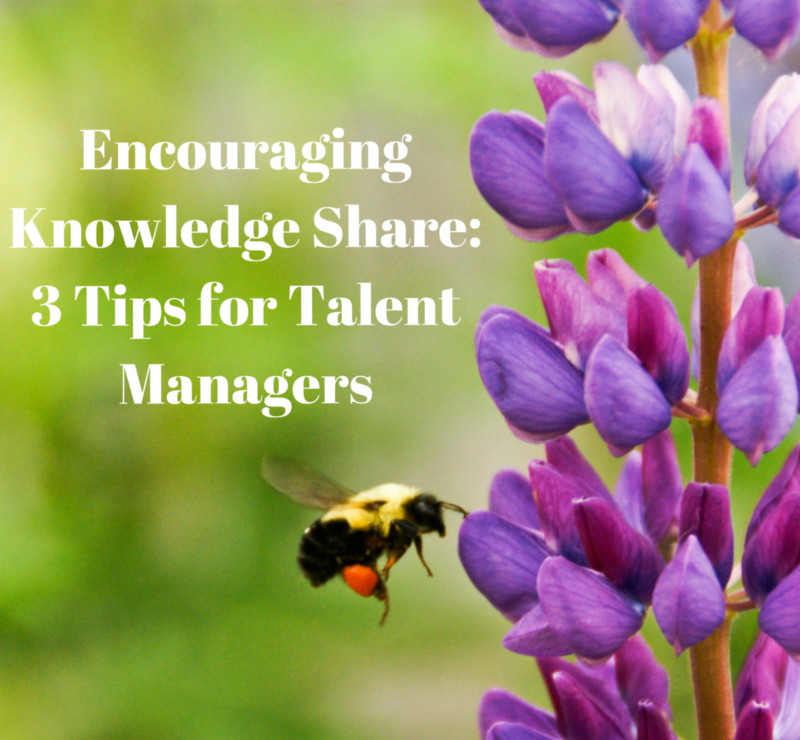
 While your employees’ collective knowledge is powerful (and one of your organization’s greatest assets), it’s also hard to measure. If you had to recreate this knowledge database from scratch, you’d be hard pressed to do so quickly and efficiently, which is why knowledge sharing is so important.
While your employees’ collective knowledge is powerful (and one of your organization’s greatest assets), it’s also hard to measure. If you had to recreate this knowledge database from scratch, you’d be hard pressed to do so quickly and efficiently, which is why knowledge sharing is so important.
But how, exactly, can you—as the talent manager—encourage knowledge sharing among employees? Here are three tips to keep in mind.
1. Foster a collaborative environment.
People often feel protective of their knowledge. After all, if Brenda knows something that no one else knows, that makes Brenda indispensable, right? You need to nip this thinking in the bud. While healthy competition among employees is fine, an adversarial environment where people refuse to share what they know because they worry about becoming obsolete isn’t healthy.
The same is true regarding the so-called “silo mentality” where departments act as separate silos and refuse to interact or share with other departments. Yes, the marketing department might have a stockpile of great knowledge in its silo, but that doesn’t do anyone else in the organization any good if they’re not willing to share it.
On the other hand, fostering a collaborative environment can go a long way in making sure employees share their knowledge and expertise. Collaboration is all about building trust, working together, and sharing credit as a team as well as among individuals.
So how can you foster a collaborative work environment?
- Be direct and clear about collaboration—make sure people understand how much the organization values it.
- Practice what you preach. It’s not enough to merely state the organization values collaboration. Every facet of the organization needs to embrace it from the top on down. So it’s essential that people see upper management working as a team.
- Reward those who continually give and share. Right off the bat, you’ll likely be able to identify people who are always happily providing colleagues with insights and expertise. These people should become role models for everyone else. Acknowledge their generosity and encourage others to follow suit.
- Make it easy for people to connect. If you have a large organization with thousands of employees and/or people are spread out across different branches, regions, or even countries, you need to provide easy ways for people to connect with one another. Software such as Skype, Slack, Trello, CRMs, and so forth can help make it easy for people to interact with one another.
2. Mix it up.
Complacency can be the death of knowledge share. If your employees work with the same people day in and day out, they will eventually reach diminishing returns on the knowledge-sharing front.
So what can you do? Mix it up by having different people work together. This could involve regularly changing/rotating teams or doing something as simple as changing the office layout every few months.
Dan Price, the CEO who famously set a $70,000 minimum wage at his company Gravity earlier this year, does exactly that. An article on Inc.com notes, “The [Gravity] office looks as you might expect — desks and computers in bland cubicles — but the space is reorganized every six months so people can sit near different colleagues.”
As different people begin working with each other, the transfer of knowledge will naturally flow—a good thing.
3. Offer a formal mentoring program.
Mentoring relationships help people transform professionally and personally. These programs also get people used to the idea of sharing ideas, insights, questions, challenges—all the things that can promote a healthy knowledge-sharing environment.
Mentoring programs have many other benefits as well, and getting people accustomed to sharing knowledge is simply one of them.
By the way, our flagship software—MentoringComplete—has a plug-in called Anytime Mentoring, which is our version of knowledge sharing software. Now you can get mentoring software and knowledge sharing software in one product. Contact us to learn more.
{{cta(‘966ce428-223b-428c-b2e2-e6cdc794837c’)}}